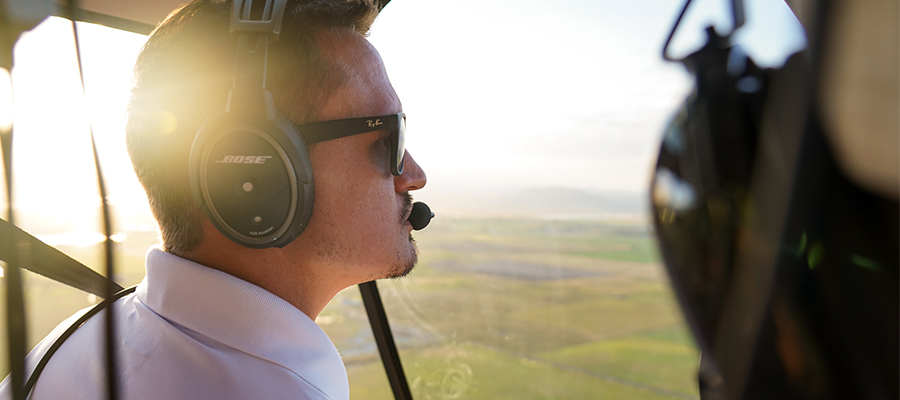Why is Utah State the right place for you?
Breathtaking. That’s the view from Cache Valley, Utah, nestled between the Wellsville mountains and the Bear River range, at the western edge of the Rockies. A view that is even more spectacular when seen from the cockpit of a Robinson R22 helicopter, as you…
…read the winds and pick your path up Logan Canyon
…watch the expanse of the Great Salt Lake unfold before you, on your way to fly into Salt Lake City International Airport
…pick out a grassy pinnacle for an off-airport landing, after checking that the elk are grazing on another hillside today
These are just a few of the experiences that Utah State Helicopters offers you on your path to become a professional helicopter pilot.
What brings people like you to Utah State Helicopters? We offer training in a challenging environment that will prepare you to fly in a broad spectrum of conditions. Coaxing a fully loaded R22 into the thin air on a hot summer day teaches power management, a skill that future employers know will keep expensive turbine engines safely within their limits. A variety of off-airport landing zones are a short flight from the airport. Winter in northern Utah brings clouds, snow, and limited visibility, developing strong flight planning skills. Busy airports with control towers are within easy reach, providing experience communicating with air traffic control.
Flying the Robinson R22 and R44, our graduates meet FAA requirements to instruct at flight schools around the country flying any type of training helicopter. Our pilots have gone on to fly tours in the Grand Canyon, Customs and Border Protection missions in the desert southwest, and medevac operations in Michigan. Earning a bachelor’s degree in aviation, our graduates have more opportunities open to them. And the size of our program means that each student is more than just a number; you are a member of the family.
Of course, there are reasons to choose Utah State Helicopters beyond the outstanding professional pilot program. Northeastern Utah offers some of the best outdoor recreational opportunities in the country, with trails for hiking, mountain biking, and dirt bike riding, plus rock climbing, skiing, and snowboarding. Two resorts serve Cache Valley, and Park City offers world-class destination resorts only a few hours away. Closer to home, Utah State University and Logan offer a cosmopolitan atmosphere in an affordable, small-town community. Logan offers something for everyone.
Come discover for yourself why Utah State Helicopters is the right choice for you!





